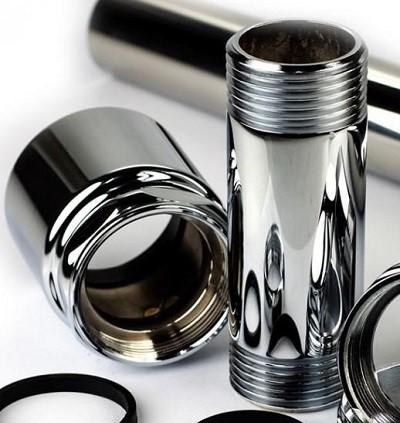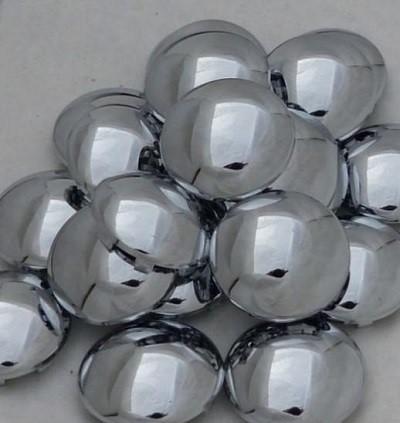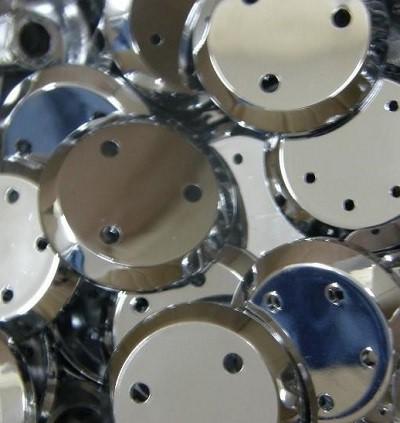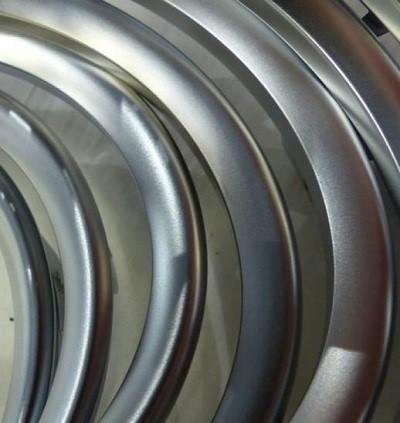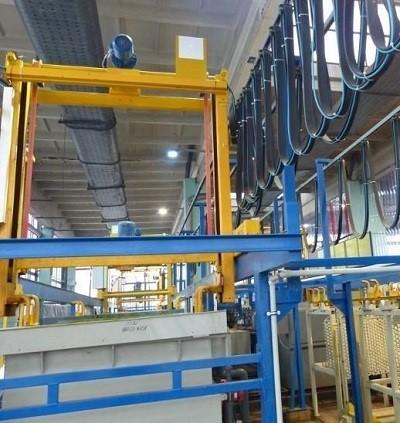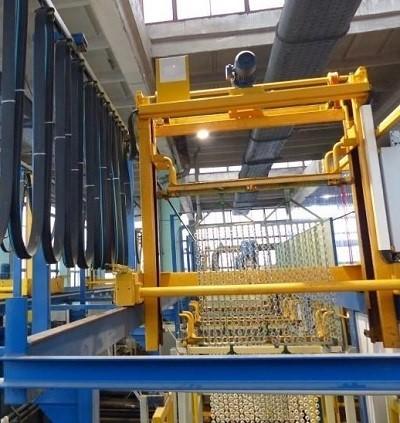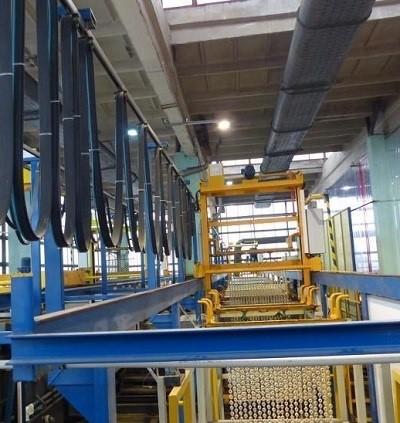Chrome plating on ABS
Metallization (decorative chrome plating) of ABS (ABS/PC) plastics is realized on an automatic suspension technological line. The process is a multi-layer metallic coating on the plastic with specified thickness (copper-nickel-chromium). The last step in the process is chrome plating. The advantage of chrome is an effective, shiny surface, which has extraordinary aesthetic qualities protective qualities. Our coating apply on door handles, holders, lamp bodies, corporate logos and many other decorative details. ABS chrome plating is used in the automotive industry, household appliances, electronics, furniture, sanitary fittings and many others.
The advantage of using plastics is the possibility of reduction of the weight of products. The density of ABS is 1.04 - 1.07 g/cm3, which means that the products are:
2-3 times lighter than aluminium
5-7 times lighter than steel
7-9 times lighter than copper and brass
The Galwanizer company has many years of experience in chrome plating of plastics. We supervise their quality during all stages of the technological process.
Producing plastic parts several rules must be strictly observed. Here are some of them:
-
each fault of a mould is emphasized once a galvanic coating is formed (the following faults of the surface must be particularly avoided: scratches, cuts, matt areas, "orange skin", concavities)
-
large plane and smooth surfaces must be avoided
-
the radius of the edges should not be smaller than 0,3mm
-
blind openings must not be deeper than their diameter
Requirements regarding injection moulds:
-
the forms should be made of high-quality non-porous chrome steel (chroming of the forms is not recommended)
-
smoothness of the surface of the form: min. class 12
-
no lubricants are allowed to remove the moulded element
-
channels in the mould that supply plastic must be at least 50% wider than in the case of other materials
Requirements as regards the parameters of injection:
-
Good dryness of plastics
-
Possibly high injection temperatures
-
Possibly long time of injection
-
Possibly low pressure of injection
-
The mould must be thermally stabilised (the temperature of the form should be within the range 60-80°C and must be stable within the range of +- 1°C)
-
The capacity of the cylinder must be within the range of 70-80% of the capacity of the form
-
Precisely defined stoppages between cycles
-
All lubricants are prohibited
-
Cleanliness during removal of the moulded elements and their cutting
-
Seasoning of the moulded elements for at least 4 days in room temperature





